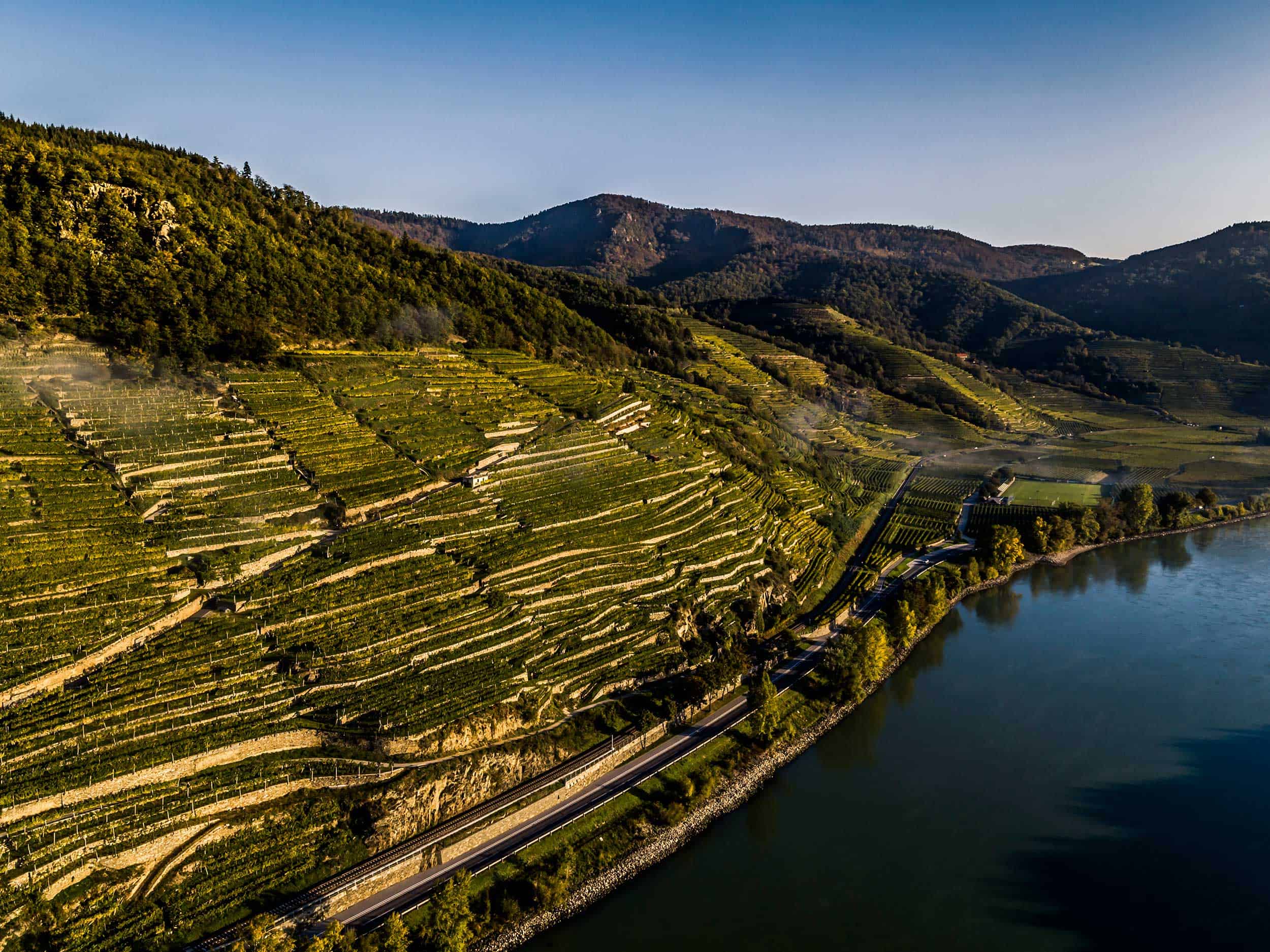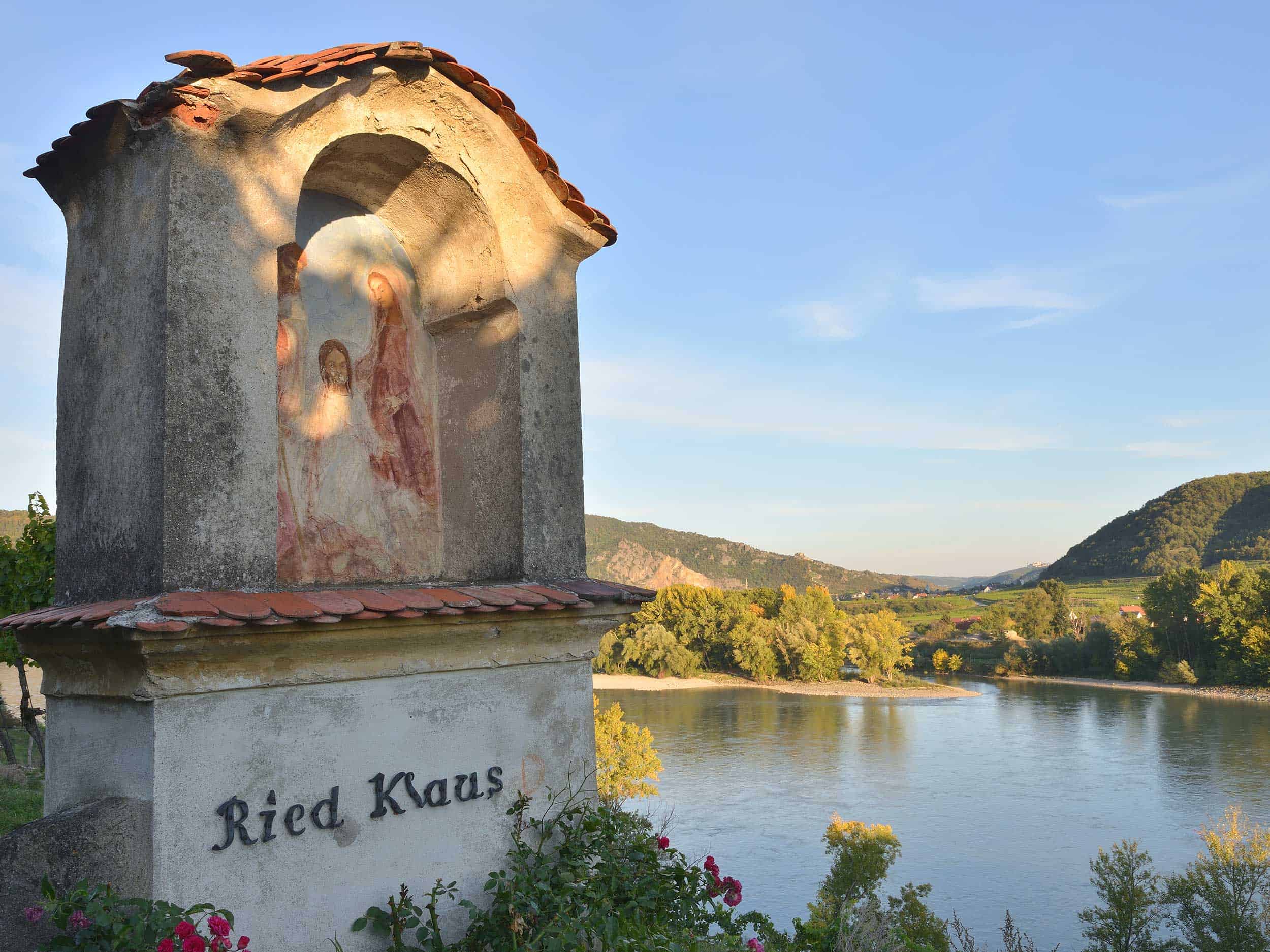Klaus
Klaus is so to speak the continuation of Achleiten, however, it is separated by a path that serves as a boundary, which also represents a geological fault. The name can be followed back to the old term “Kleyss” and designates a constriction; this is self-explanatory when looking at the old road to Wachau leading along the Klaus vineyard.
Town: Weißenkirchen
First mentioned in year: 1437
Terraced vineyard
Aspect: SO
Slope gradient: up to 77%
Altitude: 204-327m
Soil profile
“Klause refers to a gorge-like narrow pass through a valley in the Alps. It is thus no wonder that the steep slope between the Danube and Achleiten was given the name Klaus.
Migmatite-amphibolite dominate in the terrace vineyards of the upper Klaus. In contrast, the lower Klaus is home to paragneiss. Paragneisses are also metamorphic rocks, but in contrast to migmatites, they were not subject to partial melting.
Underneath the sandy, stony topsoil in the profile, the amphibolite character dominates, visible by the dark-coloured rock. The white coatings are carbonates that were precipitated during the course of soil formation. The carbonate itself probably comes from the glacial loess cover, which, after being dissolved during the course of weathering, was precipitated in the cracks of the rock as a white coating. The Klaus is one of the best Riesling slopes in the Wachau.”
Migmatite-amphibolite dominate in the terrace vineyards of the upper Klaus. In contrast, the lower Klaus is home to paragneiss. Paragneisses are also metamorphic rocks, but in contrast to migmatites, they were not subject to partial melting.
Underneath the sandy, stony topsoil in the profile, the amphibolite character dominates, visible by the dark-coloured rock. The white coatings are carbonates that were precipitated during the course of soil formation. The carbonate itself probably comes from the glacial loess cover, which, after being dissolved during the course of weathering, was precipitated in the cracks of the rock as a white coating. The Klaus is one of the best Riesling slopes in the Wachau.”


